On Stage
On Stage: Frictions
Apr 06, 2023 - Jul 09, 2023
About the Series
Each spring the MCA presents On Stage, a suite of performance works connected by a rigorous and relevant curatorial theme. In 2023, the series focuses on the frictions that exist in a society shaped by race—and the transformative power of productive resistance.
Frictions presents performances by three artists—Will Rawls, Shamel Pitts | TRIBE, and Barak adé Soleil—who explore blackness through bodily movement. Through in-person performances as well as performance-driven video installations, their works engage themes including queer intimacy, disabled bodies in motion and at rest, and the relationship between animation, race, and history. Defying conventional notions of blackness, queerness, movement, dance, and performance, Frictions invites both audiences and performers to engage with the productive tensions that emerge through each work.
Frictions is organized by Tara Aisha Willis, Curator in Performance, with Laura Paige Kyber, Curatorial Associate in Performance. Additional support on Will Rawls, [siccer], provided by Nolan Jimbo, Marjorie Susman Curatorial Fellow.
Save 20% when you buy a package to all three On Stage: Frictions performances. Buy tickets now.
Performances
April
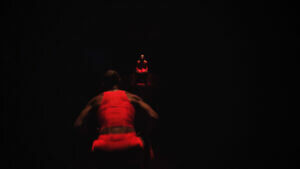
Shamel Pitts and Tushrick Fredericks, Touch of RED. Performed at MASS MoCA, North Adams, MA, October 22, 2022.Photos: The Adeboye Brothers
Shamel Pitts | TRIBE, Touch of RED
Apr 6–8, 2023
Edlis Neeson Theater
Set inside a contemporary boxing ring, this duet for two Black men explores Black multiplicity and human connection.
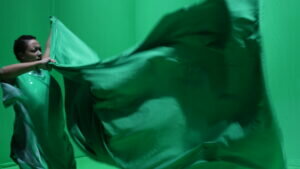
Photo by Will Rawls.
Will Rawls, [siccer]
Apr 27–30, 2023
Edlis Neeson Theater
Encompassing dance, photography and sound, [siccer] addresses the relationship between blackness and image-making.
May
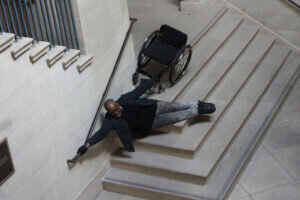
Performance view, Barak adé Soleil, a series of movements, Claremont, California. Photo: Marcus Polk.
Barak adé Soleil, SHIFT
May 6, 2023
MCA Plaza
This newly commissioned work amplifies the presence of Black neurodiverse and disabled bodies by occupying the museum’s spaces both digitally and physically.
Access Information
Shamel Pitts | TRIBE, Touch of RED
Captioning, ASL, and audio description will be provided for the April 8 performance.
Will Rawls, [siccer]
Captioning, ASL, and audio description will be provided for the April 29 performance.
Barak adé Soleil, SHIFT
This event is durational and will move through different areas of the museum, including the MCA Plaza and front steps, the northwest spiral staircase, and both public lobbies. The majority of the event will take place in the spiral staircase on the west side of the museum’s first floor, and will be visible from various angles on multiple floors. The available space for viewers will change based on the location of the promenade as it moves through the museum, and MCA staff will be available to facilitate the audience’s movement to maintain access to elevators, passageways, and stairwells. Portable stools will be available for visitors who wish to use them, where possible.
ASL interpretation will be provided. Designated areas for wheelchair and mobility device users will be available on the staircase landings. Live audio description will be provided: devices will be available at the museum and audience members may also use their personal devices to access the audio description through a URL provided on-site. For the most up to date accessibility information, please check the webpage mcachicago.org/shift or contact the box office at 312-397-4010.



Program Notes
Program Notes (English)
SCHEDULE
Shamel Pitts | TRIBE, Touch of RED
Edlis Neeson Theater
April 6, 8 pm
April 7, 8 pm
April 8, 8 pm
Will Rawls, [siccer]
Edlis Neeson Theater
April 27, 7:30 pm
April 28, 7:30 pm
April 29, 7:30 pm
April 30, 2 pm
March 22–June 18: Video installation, first-floor spiral stairwell (east)
Barak adé Soleil, SHIFT
MCA Plaza
May 6, 1–5 pm
May 2–June 18: Video installation, first-floor spiral stairwell (west)
RELATED PROGRAMS
Talk | Shamel Pitts and Jafari S. Allen
Northwestern University
Wirtz Center for the Performing Arts 710 N Lake Shore Drive
April 8, 2–3:30 pm
Talk | Will Rawls and Taylor Renee Aldridge
Edlis Neeson Theater
April 29, 2–3:30 pm
Talk | Barak adé Soleil and Guest
MCA Commons
May 2, 6 pm
CURATOR’S NOTE
This spring’s On Stage series, Frictions, explores blackness through bodily movement with a suite of performances and video works by Shamel Pitts | TRIBE, Will Rawls, and Barak adé Soleil. In each project, performers navigate the social dynamics of perception, recognition, and prejudice that enact racial distinction, while simultaneously exploring the frictions they encounter as they move through the varying timeframes of performance and dance. As a series, Frictions proposes that the resistance and tension that emerge through this navigation is full of productive, transformative potential.
Each work in the series is composed of rhythms, textures, momentums, and exchanges between viewers and performers who co-create their own images in motion. Movement is central to these works and to these artists’ practices; moving itself is what distills the particularities of performance—spectacular, theatrical, caught up in the relationship between performer and audience member. Staging their own blackness within the microcosm of the theater and the museum, these artists defy inflexible narratives in which Black people must constantly rehearse and perform traumatic histories. Nonetheless, the macrocosm of our society—in which the movement of Black bodies, particularly those that are queer and disabled, is curtailed and shaped by racism—is always close at hand.
Performance is often called “time-based art”: it moves from beginning to middle to end, with a before, an after, and a transformation in between. To consider Black bodies and lives in relation to motion is to consider them in relation to time: the ways they are complex and changing, rather than monolithic and static. Black studies scholar Michelle M. Wright invites us to consider history alongside the “specific moment in which blackness is being imagined—the ‘now’ through which all imaginings of blackness will be mediated.”1 Chicago’s own Black performance theorist Tina Post identifies the possibility of a “present that contains fleeting encounters with alternative embodiments,” in which race is “used to disrupt the time sheets of nonfreedom.”2 Liberation from antiblackness may not be possible here and now, but perhaps certain moments of transformation in performance can temporally (and temporarily) suspend the typical workings of perception and expectation.
Each of the three artists in Frictions explore questions of temporality as they move through differing timeframes or time signatures. While these distinct syncopations serve as grounding forces in each work, together they point to the many possible relationships to time and body that are possible for Black lives and in Black choreography and performance. Touch of RED, by Shamel Pitts | TRIBE, investigates queer intimacy and physical encounters through speed, perpetual motion, powerful pauses, and driving beats, using references to club dancing and competitive boxing. Barak adé Soleil’s SHIFT explores the liveness and presence of disabled bodies both at rest and in the act of navigating often- inaccessible built environments. Will Rawls’s [siccer] deploys the staccato of stop-motion animation to disrupt expectations of both the smooth, continual motion of film and the stillness of static images. In addition to their live performances, Rawls and adé Soleil’s works involve video installations presented in the museum’s first-floor lobby over the course of several weeks. Frictions takes shape in the museum over an extended duration, through these videos and through the artists’ fleeting, limited-run performances, creating overlapping timeframes and pathways for experiencing the series itself.
In physics, friction is defined as a “force that resists the sliding or rolling of one solid object over another,” a productive force “that resists relative motion between two bodies in contact.” The performances and associated video projects of Frictions might be called “resistive choreographies,” not because they make explicit within them a singular message of resistance against an outside force but rather because they enact resistive contact within their very form as they encounter an audience. Black queer temporalities can be a form of resistance that calls “for a break from the universal structure of the museum, a place that has been invented to capture, preserve, and record time through art and relics of culture, and to ‘conserve’ the spirit in stasis, a perpetual death, structuring its potential (energy) in awe of its entropy,” as Jordan Barrant, Amari Grey, Shameekia Johnson, and Brianna Robinson describe in a 2021 Studio Museum in Harlem panel on museum practice.3 The force of Frictions implicates audiences and performers alike in the friction—and energy—created at their point of encounter: on screen, in public space, and on stage.
– Tara Aisha Willis Curator of Performance
1 Michelle M. Wright, Physics of Blackness: Beyond the Middle Passage Epistemology (Minneapolis: University of Minnesota Press, 2015), 14.
2 Tina Post, “Joe Louis’s Utopic Glitch,” in
Race and Performance After Repetition, ed. Soyica Diggs Colbert, Douglas A. Jones Jr., and Shane Vogel (Durham: Duke University Press, 2020), 105.
3 Studio Museum Harlem, Queer Time and the Museum Professionals Seminar, 2021, https:// studiomuseum.org/article/queer-time-and- museum.
Shamel Pitts | TRIBE, Touch of RED
April 6–8 | Edlis Neeson Theater
Running time is 90 minutes with no intermission.
This performance includes loud, pulsing music and moving lights throughout. The performance includes minimal spoken language.
Captioning, ASL, and audio description will be provided for the April 8 performance.
ABOUT THE WORK
One of the most elemental and brutal sports, boxing is also highly technical. Like dancers, boxers train for years to hone their moves. But what is it about two men trading punches in a ring that enthralls us? Perhaps it allows us to envision what we might do if a similar situation were to arise. Would you battle through the pain? Would you emerge victorious? Why practice for such violent competition? Does what we practice manifest our reality? From these questions stems Touch of RED, in which Shamel Pitts and his Brooklyn-based arts collective, TRIBE, turn the boxing ring into a pulsing night club dance floor.
TRIBE is comprised of an interdisciplinary group of artists including video mapping and lighting designer Lucca Del Carlo, set designer Mimi Lien, composer Sivan Jacobovitz, and theatrical lighting designer Rus Snelling. With Touch of RED, they come together to propose an alternative look at how men can practice relating to each other and the world.
Like all good parties, Touch of RED begins with waiting. Held in the lobby until just the right moment, anticipation and collectivity builds amongst audience members as they await their shared experience in the theater. In her writing on queer ball culture, whose parties famously start later than scheduled, scholar Emily Bock theorizes this waiting: “as a technique of enduring the present. . . . [it] is an extended moment when we shift our orientation toward building a world here and now. Waiting is an elongated activation that doesn’t rely on a future desired end, but rather generates a temporary collectivity.”1 Once inside the theater, the action is already in motion and continues to build. Driving rhythms support perpetual motion, with projected images casting shadows across the floor and into the audience. The space created by Pitts and fellow performer Tushrik Fredericks is not entirely open to us. At times illuminated by overhead lighting, members of the audience are aware of each other as spectators in contrast to what would usually be an anonymous experience in the deafening darkness of the club. In this way, the boxing ring is transformed into a theater, the theater into a club, and audience members into participants in the action.
Interdisciplinary artist and writer Sable Elyse Smith describes the party as “a moment of suspension” and the “Sensation conjured by this dance” as “void of history, geographic memory, location, or pain. . . . a sensation without scars or muscle memory,” later clarifying that “the dance . . . is not an escape. It is a punctuation. It is about claiming an instant of time and something that can be mine completely.”2
In Touch of RED, Pitts and Fredericks suspend temporality. Their performance is an opportunity to reframe our expectations of time, space, and the markers of normative identity, and an invitation to soften and heal together. In a recent post-performance talk, Pitts reminded the audience that “softness is just a quality,” and though some cultures may associate it with weakness, it can require immense power to engender. In Touch of RED, we are invited to practice softening as a way of manifesting a more peaceful existence—perhaps not entirely without conflict, but with more freedom, dignity, and humanity.
— Laura Paige Kyber, Curatorial Associate
1 Emily R. Bock, “…waiting…,” in Queer Nightlife, ed. Kemi Adeyemi, Kareem Khubchandani, and Ramon Rivera-Servera (Ann Arbor, MI: University of Michigan Press, 2021), 48.
2 Sable Elyse Smith, ”Ecstatic Resilience,” in Queer Nightlife, 126–27.
Will Rawls, [siccer]
APRIL 27–30 | Edlis Neeson Theater
Running time is 120 minutes.
This work includes live performances and a video installation on the museum’s first floor that runs from March 22 through June 18, 2023.
This performance is improvised and may include some swearing and sexual innuendo.
Captioning, ASL, and audio description will be provided for the April 29 performance.
ABOUT THE WORK
Encompassing dance, video, text, and installation, Will Rawls’s practice stages failures of communication, calling attention to the flawed terms through which exchange is expected to occur. Inhabiting this gap between expression and comprehension, Rawls’s work models alternative languages that allow for more layered and nuanced articulations of selfhood, particularly for Black performers.
[siccer] expands upon this idea through its experimentation with stop-motion, a filmmaking technique in which subjects move incrementally between still photographs to produce the illusion of movement. While the subjects of stop-motion films are typically inanimate objects—puppets or clay figures, for instance—the characters that are photographed in Rawls’s project are dancers, all of them Black, who are mysteriously trapped in fragmented reenactments of iconic American films. Throughout the performance, which adopts the format of a stop-motion film shoot, an automated camera photographs the performers every few seconds. Here, Rawls invites us to consider the ways in which Black bodies are relentlessly documented, distorted, and circulated within and by the media, often framed as “strange,” or thrust into narratives that are not their own. However, the intervals between shutter clicks—as the camera resets to take another photograph— create momentary gaps in time.
These gaps offer fleeting moments of respite from surveillance, creating interludes where the performers can act without being captured in images. [siccer] revels in this fundamental paradox of stop-motion, a technique that both incessantly records its subjects and allows for intervals of indeterminacy. Throughout the film shoot, the dancers move in and out of the camera’s clicking frame, performing with an acute awareness of their hypervisibility while finding ways to distort the resulting images of themselves through vocal, physical play and improvisation. This live performance of [siccer] is accompanied by a video installation, currently on view at the MCA in the first-floor stairwell on the east side of the building, that reimagines the iconic American film at the core of the stage show.
The project’s title references the Latin adverb sic, which is typically placed in brackets in a text to call attention to instances of “incorrect” spelling or grammar within a piece of writing or spoken quote. Often, sic is used in print to designate Black vernacular slang as a deviation from standard English. Rawls’s project is to reframe this perceived divergence as a generative performance culture that employs absurdity, misquotation, and illegibility to narrate the world beyond its limiting scripts.
– Nolan Jimbo, Marjorie Susman Curatorial Fellow
BARAK ADÉ SOLEIL, SHIFT
MAY 6 | MCA Plaza
Running time is four hours.
This work includes a live event on May 6, and a video installation on the museum’s first floor that runs from May 2 through June 18, 2023.
This event is durational and will move through different areas of the museum, including the MCA Plaza and front steps, the northwest spiral staircase, and both public lobbies. The majority of the event will take place in the spiral staircase on the west side of the museum’s first floor, and will be visible from various angles on multiple floors. The available space for viewers will change based on the location of the promenade as it moves through the museum, and MCA staff will be available to facilitate the audience’s movement to maintain access to elevators, passageways, and stairwells. Portable stools will be available for visitors who wish to use them, where possible.
ASL interpretation will be provided. Designated areas for wheelchair and mobility device users will be available on the staircase landings. Live audio description will be provided: devices will be available at the museum and audience members may also use their personal devices to access the audio description through a URL provided on-site. For the most up to date accessibility information, please check the webpage mcachicago.org/shift or contact the box office at 312-397-4010.
ABOUT THE WORK
Barak adé Soleil works from the belief that blackness, disability, and queerness are mutually constitutive and inextricable from each other. adé Soleil’s performance and installation work often takes the form of an intervention or assertion within the museum context, challenging business-as-usual within the building’s physical structure as well as the institutional histories and ideologies represented by it. adé Soleil’s 2015 performance residency at the MCA considered the formal conventions of the Edlis Neeson Theater. Now, in the newly commissioned work SHIFT, adé Soleil focuses on the museum’s public spaces.
At the start of this project, adé Soleil set out to amplify the presence of Black neurodiverse and disabled bodies through experimentations with scale, seeking to explore the relationship between the museum’s expansive, stark surfaces and the work’s intimate images of performers. In its final form, SHIFT digitally and physically occupies the museum’s spiral staircase, an iconic structure that creates a vertical artery between the first floor’s theater and the fourth floor’s major exhibition spaces—an artery that is nonetheless distinctly inaccessible to people in wheelchairs. The video installation, situated at the base of the stairwell, features an outcropping of skyward-facing video screens that proclaim, with their glow, the presence of the performers’ bodies to viewers on all four levels of the museum. The video documents their bodies, both at rest and in moments of transition and everyday gestures, through constantly shifting camera angles and degrees of proximity, dimensionality, and detail. Framed by the stairwell’s spiraling bannisters and vertical ascent, SHIFT intends to reveal in these gestures what adé Soleil describes as a charismatic “grandeur.”
SHIFT will expand to include a live event on May 6, as several local community members assemble to take part in a plaza promenade and stairway ascent at the museum, creating a pathway through its architecture. The event will generate several shifts and frictions: the participants’ gestures and breaths taken along their journey, the rub of bodies and wheelchairs along surfaces and steps, the shared experience of multiple people moving together on their own time. Not only do museum architecture, pedestrian traffic patterns, and even viewer attention tend towards ablism, but time itself often operates at certain paces and speeds. adé Soleil sees SHIFT as distinctly not about “slowness” or “stillness.” Such words imply that there is a proper pace or degree of perceptibility necessary for movement to be present in a body, and for that movement to be valued in performance (and in the world):
“For me to authentically move through a world that’s deeply ableist, and alongside capitalism, means I’m constantly moving against the grain of environments that are not built for me. Ultimately, whether or not I desire it, I’m moving through performance: trying to go up and down stairs that I cannot, trying to deal with the elevator that may or may not be working. I have to use my gestures. . . . It becomes a sort of performance. I cannot not do performance. It is an amplification of making space in the world, in the body that I’m in.”
Subtlety might be a better word for the quality of bodily presence adé Soleil foregrounds in SHIFT. “Subtle shifts can mean movement and depth of movement,” he says. Bodies in repose, bodies breathing, bodies making small, everyday gestures as they simply exist on camera: all of these are full of movement. The work invites us to alter our perception of speed and slowness, to consider these subtle movements to be, if not large, then certainly major, or, to borrow adé Soleil’s word, grandiose.
adé Soleil aligns SHIFT with what scholar Kevin Quashie has called “black aliveness”: What if artworks were created from the assumption that the humanity of Black disabled people is already a given?1 The video installation for SHIFT could help, as Quashie puts it, to “imagine a Black world,”2 “a scene of aliveness, a world of us”3 that is not detached from the ways that both blackness and disability are, over and over, closely linked with death in our society, but that nonetheless remains busy with its own imagining otherwise. adé Soleil describes the title SHIFT as being partially about shifting perceptions and expectations of what Black, disabled, neurodiverse, queer bodies are, as well as what they do and where they can be. The performance could also be understood to insist on its own timeframe, its own strategies for traversing the museum: an act in friction with the built environment, certainly, but also an act carried out on terms and in timeframes created and sustained by the artists in their present moment. What if simply being—being present, being alive, being as you must be, which is to say being as you are—is already plenty?
– Tara Aisha Willis, Curator of Performance
1 Kevin Quashie, Black Aliveness, or A Poetics of Being (Durham: Duke University Press, 2021), 1.
2 Quashie, 13.
3 Quashie, 5.
Notas del programa (Español)
PROGRAMACIÓN
Toque de ROJO de Shamel Pitts | TRIBE
Teatro Edlis Neeson
6 de abril, 8 pm
7 de abril, 8 pm
8 de abril, 8 pm
[siccer] de Will Rawls
Teatro Edlis Neeson
27 de abril, 7:30 pm
28 de abril, 7:30 pm
29 de abril, 7:30 pm
30 de abril, 2 pm
CAMBIOS de Barak adé Soleil
La plaza del MCA
6 de mayo, 1–5 pm
EVENTOS RELACIONADOS
Conversación | Shamel Pitts y Jafari S. Allen
Northwestern University
Wirtz Center for the Performing Arts
710 N Lake Shore Drive
8 de abril, 2–3:30 pm
Conversación | Will Rawls y Taylor Renee Aldridge
Teatro Edlis Neeson
29 de abril, 2–3:30 pm
Conversación | Barak adé Soleil e invitada
En el área Commons del MCA
2 de mayo, 6 pm
NOTA DE LA CURADORA
La serie On Stage de esta primavera, Frictions, explora la negritud a través del movimiento corporal con un conjunto de espectáculos en vivo y obras de vídeo de Shamel Pitts | TRIBE, Will Rawls y Barak adé Soleil. En cada proyecto, los artistas navegan las dinámicas sociales existentes en la percepción, el reconocimiento y el prejuicio que desempeñan la distinción racial, al mismo tiempo que exploran las resistencias y fricciones que surgen al moverse por entre diferentes temporalidades de performance y danza. En conjunto, Frictions propone que la resistencia y la tensión que surgen a través de aquella navegación están llenas de un productivo y transformador potencial.
Cada obra de la serie está compuesta por un conjunto de ritmos, texturas, impulsos e intercambios entre los espectadores y los artistas, quienes colaboran para crear sus propias imágenes en curso. El movimiento es fundamental en estas obras y en las prácticas de estos artistas; el propio movimiento es lo que destila las particularidades de la performance: espectacular, teatral y envuelta en la relación entre artista y espectador. Así, estos artistas —los cuales al navegar físicamente escenifican su propia negritud dentro del microcosmo del teatro y de todo el museo—, desafían las narrativas rígidas que obligan a las personas negras a ensayar e interpretar historias traumáticas constantemente. Sin embargo, el macrocosmo de nuestra sociedad—en la que el movimiento de los cuerpos negros, particularmente esos queer y discapacitados, se ve restringido y moldeado por el racismo—queda siempre al alcance.
La performance se conoce como “un arte a base del tiempo”: se mueve desde el principio a la mitad al fin, con un “antes”, un “después” y una transformación entre ellos. Considerar a los cuerpos y vidas negras en relación al movimiento es al igual que considerar su relación al tiempo: las formas en las que ellos son complejos y cambiantes en lugar de ser monolíticos y estáticos. La académica de estudios de negritud Michelle M. Wright1 nos invita a considerar la historia junto con el “determinado momento en el que se está imaginando la negritud; el ‘ahora mismo’ mediante el cual todas las imaginaciones de la negritud se mediarán”. La teórica de performances y negritud, y originaria de Chicago, Tina Post, identifica la posibilidad de un “presente que contenga encuentros breves con encarnaciones alternativas”2, en el cual la raza se “utiliza para trastornar las hojas de horarios de la falta de libertad”. Puede que no sea posible liberarnos de la anti-negritud en este momento, pero quizá ciertos momentos de transformación en las perfomances puedan suspender en nuestros cuerpos (y en el tiempo) los funcionamientos típicos de la percepción y la expectativa.
Cada uno de los tres artistas de la serie explora cuestiones de la temporalidad y las fricciones que ellos encuentran mientras atraviesan diferentes marcos temporales y rítmicos. Aunque estas distintas síncopas sirven como fuerzas que sustentan cada obra, juntas señalan las varias relaciones con el tiempo y cuerpo que son posibles para las vidas negras, así como en la coreografía y la interpretación creadas por personas negras. Toque de ROJO, de Shamel Pitts | TRIBE, investiga la intimidad y los encuentros físicos queer a través de la velocidad, el movimiento perpetuo, las pausas potentes y los ritmos impulsores, utilizando como referencias el baile de discotecas y el boxeo competitivo. CAMBIOS, de Barak adé Soleil, explora la vitalidad y la presencia de los cuerpos discapacitados, tanto en reposo como mientras navegan entornos construidos que suelen ser inaccesibles. [siccer], de Will Rawls, emplea el staccato de la animación de fotograma a fotograma en el movimiento y el discurso, alterando las expectativas tanto del movimiento fluido y continuo de las películas como de la quietud de las imágenes estáticas. Además de sus espectáculos en vivo, las obras de Rawls y adé Soleil incorporan videoinstalaciones presentadas en el museo, a lo largo de varias semanas, en el vestíbulo del primer piso. Frictions sucede, por medio de estos vídeos, en el museo a lo largo de una duración prolongada, aunque además están las interpretaciones de estos artistas fugaces, sus performances limitadas, lo que crea marcos temporales y trayectorias que experimentan con la propia serie en que están superpuestos.
En la física, la fricción se define como una “fuerza que resiste el deslizamiento o la rodadura de un objeto sólido sobre otro”, una fuerza productiva “que resiste el movimiento relativo entre dos cuerpos en contacto”. Los espectáculos y proyectos de vídeo de Frictions podrían denominarse como coreografías de resistencia, no porque explicitan en ellas un mensaje singular de resistencia contra una fuerza exterior, sino más bien porque promulgan un contacto de resistencia dentro de su propia forma al encontrarse con una audiencia. Las temporalidades negras y queer pueden ser una forma de resistencia que exige “una ruptura con la estructura universal del museo, este un lugar que ha sido inventado para capturar, preservar y grabar el tiempo a través del arte y las reliquias de la cultura, y para ‘conservar’ el espíritu en estasis, una muerte perpetua, estructurando su potencial (energía) en asombro de su entropía”, como lo describen Jordan Barrant, Amari Grey, Shameekia Johnson y Brianna Robinson en un panel del Studio Museum en Harlem, en 2021, sobre la práctica de los museos.3 La fuerza de Frictions implica tanto a las audiencias como a estos artistas en la fricción—y la energía—creada en su momento de encuentro: en la pantalla, el espacio público y el escenario.
–Tara Aisha Willis, curadora de performances
1 Michelle M. Wright, Physics of Blackness: Beyond the Middle Passage Epistemology (Minneapolis: University of Minnesota Press, 2015), 14.
2 Tina Post, “Joe Louis’s Utopic Glitch,” in Race and Performance After Repetition, ed. Soyica Diggs Colbert, Douglas A. Jones Jr., and Shane Vogel (Durham: Duke University Press, 2020), 105.
3 Studio Museum Harlem, Queer Time and the Museum Professionals Seminar, 2021, https:// studiomuseum.org/article/queer-time-and- museum.
Toque de ROJO de Shamel Pitts | TRIBE
El tiempo de duración es de 90 minutos.
Esta performance incluye música fuerte y palpitante y luces móviles en todas partes. La performance incluye muy poco lenguaje oral.
Se proporcionarán subtítulos, ASL y descripción de audio para la presentación del 8 de abril.
ACERCA DE LA OBRA
El boxeo es uno de los deportes más elementales y brutales, pero también uno muy técnico. Como los bailarines, los boxeadores entrenan durante varios años para perfeccionar sus movimientos. Pero, ¿qué es lo que nos cautiva cuando dos hombres intercambian puñetazos en un cuadrilátero? Quizá nos permite imaginar lo que haríamos si surgiera una situación similar. ¿Tú lucharías contra el dolor? ¿Lograrías llegar a la victoria? ¿Por qué se suele practicar para una competición tan violenta? ¿Qué resulta si lo que practicamos manifiesta nuestra realidad?
Desde estas preguntas nace Touch of RED (Toque de ROJO), en el que Shamel Pitts y su colectivo artístico de Brooklyn, TRIBE, convierten el cuadrilátero de boxeo en la palpitante pista de baile de una discoteca. TRIBE consta de un grupo de artistas interdisciplinarios, quienes incluyen al diseñador de “vídeo mapping” (elementos visuales basados en la superficie donde se proyectan) e iluminación Lucca Del Carlo, la escenógrafa Mimi Lien, el compositor Sivan Jacobovitz y el diseñador de iluminación teatral Rus Snelling. En Toque de ROJO se unen para proponer una alternativa para el modo en que los hombres pueden ejercer su relación entre sí y con el mundo.
Como todas las mejores fiestas, Toque de ROJO comienza con una espera. Mantenidos en el vestíbulo hasta el momento preciso, la expectación y la colectividad aumentan entre los miembros de la audiencia mientras esperan esta experiencia compartida en el teatro. En sus escritos sobre la cultura de las fiestas de baile queer, las cuales son famosas por empezar más tarde de lo programado, la académica Emily Bock teoriza que esta espera es “una técnica de soportar el presente, un momento prolongado en el que cambiamos nuestra orientación hacia la construcción de un mundo en este momento […] Es una activación alargada que no depende de un resultado deseable en un futuro, sino que genera una colectividad temporal”.1
Una vez dentro del teatro, la obra ya está en marcha y se expande. Ritmos impulsores apoyan al movimiento perpetuo, mientras que unas imágenes proyectadas ensombrecen partes del suelo y la audiencia. El espacio creado por Pitts y el artista teatral que le acompaña, Tushrik Fredericks, no está totalmente a nuestra disposición. A veces iluminados por luces desde arriba, los miembros de la audiencia están conscientes unos de otros como espectadores, en contraste con lo que típicamente sería una experiencia anónima en la ensordecedora oscuridad de la discoteca. De este modo, el cuadrilátero de boxeo se transforma en un teatro, el teatro en una discoteca, y las audiencias en participantes de esta obra.
La artista interdisciplinaria y escritora Sable Elyse Smith describe a la fiesta como “un momento de suspensión”, así como la “sensación conjurada por la danza [como] vacía de la historia, la memoria geográfica, la ubicación o del dolor […] una sensación sin cicatrices o memoria muscular”, y aclara después que “la danza […] no es un escape, [sino] una puntuación [donde uno puede] reclamar un instante de tiempo [como totalmente suyo]”.2
En Toque de ROJO, Pitts y Fredericks suspenden la temporalidad. Es una oportunidad para reformular expectativas sobre el tiempo, el espacio y los marcadores de la identidad normativa, y asimismo una invitación a suavizarnos y sanarnos juntos. En una reciente charla luego de una performance, Pitts le recordó a la audiencia que “la suavidad es simplemente una característica”, y aunque algunas culturas la asocien con la debilidad, puede requerir una gran potencia incorporarla. En Toque de ROJO, estamos invitados a practicar la suavización como método de manifestar una existencia más pacífica; esto acaso sin eliminar del todo el conflicto, pero con más libertad, dignidad y humanidad.
– Laura Paige Kyber, curadora adjunta
1 Emily R. Bock, “…waiting…,” in Queer Nightlife, ed. Kemi Adeyemi, Kareem Khubchandani, and Ramon Rivera-Servera (Ann Arbor, MI: University of Michigan Press, 2021), 48.
2 Sable Elyse Smith, ”Ecstatic Resilience,” in Queer Nightlife, 126–27.
CAMBIOS de Barak adé Soleil
El tiempo de duración es de cuatro horas.
Esta performance incluye un evento en vivo el 6 de mayo y una videoinstalación en el primer piso del museo, la cual estará desde el 2 de mayo hasta el 18 de junio de 2023.
Este evento es de larga duración y se moverá a través de diferentes espacios del museo, incluida la plaza del MCA y los escalones de entrada, la escalera de caracol noroeste, y ambos vestíbulos públicos. La mayor parte del evento tendrá lugar en la escalera de caracol del lago oeste, en el primer piso del museo, y será visible desde varios ángulos en varios pisos. El espacio disponible para los espectadores cambiará según la ubicación del paseo a medida que este avance por el museo, así como el personal del MCA estará disponible para facilitar el movimiento de la audiencia y para mantener acceso a ascensores, pasillos y escaleras. Taburetes portátiles estarán disponibles para los visitantes que desee utilizarlos, siempre que sea posible. Se proporcionará interpretación de ASL. Habrá un áreas designadas para usuarios de sillas de ruedas, y dispositivos de movilidad estarán disponibles en los rellanos de las escaleras. Se proporcionará descripción de audio en vivo: los dispositivos serán disponible en el museo y miembros de la audiencia también pueden utilizar sus dispositivos personales para acceder a la descripción de audio a través de una URL proporcionada en el sitio.
ACERCA DE LA OBRA
Barak adé Soleil trabaja siguiendo la creencia que ser negro, discapacitado y queer son mutuamente constitutivos e inseparables. Las obras de adé Soleil de performance e instalación adoptan a menudo la forma de una intervención o una afirmación como parte del contexto del museo, desafiando lo habitual dentro de la estructura física del edificio, así como las historias e ideologías institucionales que se ven representadas en él. En la residencia de performance en el MCA de adé Soleil, en 2015, eso significó cuestionar las convenciones formales del teatro Edlis Neeson. Ahora, en esta nueva obra encargada, SHIFT (CAMBIOS), adé Soleil se concentra en los espacios públicos del museo.
Al inicio de este proyecto, adé Soleil tuvo como fin amplificar la presencia de los cuerpos negros y morenos, neurodiversos y discapacitados, mediante experimentaciones con la escala, lo cual intenta explorar la relación entre las amplias superficies austeras del museo y las íntimas imágenes de artistas teatrales que forman parte de la obra. En su forma final, CAMBIOS ocupa tanto digitalmente como físicamente la escalera en espiral del museo, una estructura icónica que forma una arteria vertical entre el teatro de la primera planta y las principales salas expositivas de la cuarta planta, una arteria que aun así es claramente inaccesible a las personas en sillas de ruedas. La videoinstalación, situada en la base del hueco de la escalera, presenta un afloramiento de pantallas LED, orientadas hacia arriba, que proclaman con su brillo la presencia de los cuerpos de los artistas a los espectadores de todas las cuatro plantas del museo. El vídeo documenta sus cuerpos, tanto en reposo como en transición, y sus gestos cotidianos a través de los ángulos de la cámara y los grados de proximidad, dimensionalidad, complejidad y detalles constantemente cambiantes. Enmarcado por las barandillas en espiral y el ascenso vertical de la escalera, CAMBIOS intenta revelar en estos gestos lo que adé Soleil describe como una “grandeza” carismática.
CAMBIOS se ampliará para incluir un espectáculo en vivo el 6 de mayo de 2023, en el cual un grupo de varios artistas teatrales participan en un paseo por la plaza y ascienden la escalera del museo, así creando un camino a través de su arquitectura. Esta performance consistirá en una variedad de cambios y fricciones: los gestos y respiraciones de los artistas a lo largo de su recorrido, el roce de los cuerpos y las sillas de ruedas contra las superficies y los escalones; la experiencia compartida de varias personas moviéndose juntas a su propio paso.
No solo es que la arquitectura de los museos, el diseño de la circulación peatonal e incluso la atención de los espectadores tienden hacia el capacitismo, sino también el propio tiempo suele funcionar a determinados pasos y velocidades. Para adé Soleil, CAMBIOS definitivamente no tiene que ver con la “lentitud” o la “quietud”. Tales palabras sugieren que existe un apropiado paso o grado de perceptibilidad necesario para que el movimiento esté presente en un cuerpo y para que ese movimiento se valore en la interpretación teatral (y en el mundo):
“Para que yo realmente pueda atravesar un mundo profundamente capacitista, y además de eso capitalista, esto significaría que yo me moviera contra la corriente de los entornos que no están construidos para mí. A fin de cuentas, sin importar si lo desee o no, me muevo a través de una performance: intentando subir y bajar por las escaleras que no puedo, intentando lidiar con el ascensor que puede o no estar en funcionamiento. Tengo que utilizar mis gestos. […] Se convierte en una especie de performance. No puedo no hacer performance. Es una amplificación de proporcionarme algún espacio en el mundo, en el cuerpo en que estoy”.
Quizá la palabra “sutileza” mejor describa la calidad de presencia corporal que adé Soleil destaca en CAMBIOS. “Los cambios sutiles pueden significar el movimiento y la profundidad del movimiento”, como él afirma. Los cuerpos en reposo, los cuerpos respirando y los cuerpos haciendo gestos pequeños y cotidianos, todo esto mientras simplemente existen delante de una cámara: todos esos movimientos están repletos de movimiento. Esta obra nos invita a alterar nuestras percepciones de velocidad y lentitud, a juzgar este tipo de movimiento sutil, si no como grande, entonces ciertamente como fundamental, o, tomando prestada la palabra de adé Soleil, como algo grandioso.
adé Soleil alinea CAMBIOS con lo que el académico Kevin Quashie ha llamado “la vitalidad negra”1: ¿Cómo sería si se crearan las obras de arte a partir del supuesto que la humanidad de las personas negras y morenas discapacitadas ya es un hecho? La videoinstalación de CAMBIOS podría ayudar, como dice Quashie, a poder “imaginar un mundo negro”,2 “una escena de vitalidad, un mundo de nosotros”3 que no está desconectado de las formas en que tanto la negritud como la discapacidad están, una vez tras otra, estrechamente vinculadas a la muerte en nuestra sociedad, la que sin embargo sigue ocupada con su propia imaginación. adé Soleil describe que el título CAMBIOS tiene que ver en parte con cambiar las percepciones y expectativas de qué son los cuerpos queer, negros, discapacitados y neurodiversos, así como de qué hacen y dónde pueden estar. También se puede entender que el espectáculo insiste en su propio marco temporal y sus propias estrategias para atravesar el museo: un acto en fricción contra el ambiente construido, ciertamente, pero también un acto llevado a cabo en términos y marcos temporales creados y sostenidos por los artistas en su momento actual. ¿Qué pasa si simplemente existir como ser vivo —estar presente, estar vivo y ser como debes de ser, o sea, ser como ya eres— ya es más que suficiente?
– Tara Aisha Willis, curadora de performances
1 Kevin Quashie, Black Aliveness, or A Poetics of Being (Durham: Duke University Press, 2021), 1.
2 Quashie, 13.
3 Quashie, 5.
[siccer] de Will Rawls
El tiempo de duración es de 120 minutos.
Este trabajo incluye performances en vivo y una videoinstalación en el primer piso del museo, la cual estará desde el 22 de marzo al 18 de junio de 2023.
Esta es una performance improvisada y puede incluir palabras ofensivas e insinuaciones sexuales.
Se proporcionarán subtítulos, ASL y descripción de audio para la presentación del 29 de abril.
ACERCA DE LA OBRA
Mediante la danza, el vídeo, el texto y la instalación, la práctica de Will Rawls escenifica los fallas de comunicación, lo que resalta los términos imperfectos a través de los cuales se espera que el intercambio pueda ocurrir. Habitando este vacío entre la expresión y la comprensión, la obra de Rawls modela idiomas alternativos que permitan articulaciones del propio ser, las cuales sean más complejas y detalladas, especialmente para aquellos artistas de performances que sean negros.
[siccer] amplía esta idea mediante su experimentación con la técnica de fotograma a fotograma, en la que los sujetos se mueven en incrementos entre cada fotografía fija para producir la ilusión del movimiento. Aunque los sujetos de las películas de fotograma a fotograma suelen ser los objetos inanimados —unas marionetas o unas figuras de arcilla, por ejemplo— los personajes en las fotografías del proyecto de Rawls son varios bailarines, todos ellos negros, quienes están atrapados misteriosamente en fragmentos de recreaciones de películas estadounidenses icónicas. Durante toda la performance, la cual adopta el formato de un rodaje cinematográfico de fotograma a fotograma, una cámara automatizada le toma una fotografía a los bailarines cada pocos segundos, así captando sus gestos incesantemente y produciendo miles de imágenes. Aquí, Rawls nos invita a reflexionar sobre las formas en las que los cuerpos negros se documentan, distorsionan y difunden incesantemente a través de los medios de comunicación, muchas veces proyectados como algo “extraño” o enmarcados en narrativas que no les pertenece.
Sin embargo, los intervalos entre los clics del obturador —mientras la cámara se reinicia para tomar otra fotografía— crean vacíos temporales durante los cuales la cámara no documenta a los artistas. Estos momentos les ofrecen fugaces segundos de alivio de la vigilancia, así creando pausas en las que pueden actuar sin ser captados en imágenes. [siccer] se deleita en esta paradoja fundamental de la técnica de fotograma a fotograma, la cual tanto registra sin cesar a sus sujetos como permite pausas de indeterminación. A lo largo del rodaje cinematográfico, los bailarines entran y salen del fotograma de la cámara mientras va haciendo clic, llevando a cabo la interpretación siempre conscientes de su hipervisibilidad, a la vez que encuentran varias formas de distorsionar las resultantes imágenes de sí mismos a través de juegos vocales, físicos y la improvisación. Este espectáculo en vivo de [siccer] va acompañado de una videoinstalación, la cual se puede ver actualmente en la primera planta de la escalera del lado este del edificio del MCA, en la cual se reimagina una película estadounidense icónica en la que se basa esta performance.
El título del proyecto hace referencia al adverbio latino sic, que se suele usar entre corchetes en un texto para llamar la atención a los casos de ortografía o gramática “incorrecta” en un escrito o cita oral. A menudo, sic se utiliza en escritos para designar a la lengua callejera vernácula negra como una desviación del inglés estándar. La tarea de Rawls es reformular la percepción de que aquello sea una divergencia, para que así se entienda como una cultura performativa y generativa que emplea el absurdo, las citas erróneas y la ilegibilidad; esto para narrar este mundo más allá de ciertas limitantes expectativas.
– Nolan Jimbo, becario curatorial Marjorie Susman
Artworks
As part of the exhibition, two video installations are on view on the museum’s first floor through July 9.
Will Rawls’s [siccer] addresses the relationship between blackness and image-making. For the artwork, Rawls installed a series of small green screens of various tones and a film that includes a Ray Charles cover of Kermit the Frog’s “It’s Not Easy Being Green” along the spiral staircase leading up to the Commons. As the artist explains, “People say the color green is supposed to look bad on skin, but that’s predominately true for white performers: so much of stagecraft has been calibrated to look good for white skin, but brown skin can look really beautiful in green. Still, green is thought of as sickly, alien, witchy.”
In Barak adé Soleil’s dreamlike video installation, Black neurodiverse and disabled bodies infiltrate a spiral stairwell within the museum, where they are shown from many angles and at multiple scales, both at rest and as they shift. adé Soleil’s installation offers rest, and the everyday gestures of these bodies, as forms of political resistance for Black people—challenging the media’s often violent interpretation of these bodies as lazy or near death.
Installation Views
Funding
Lead support for the 2022–23 season of MCA Performance and Public Programs is provided by Elizabeth A. Liebman.
Major support is provided by the Alphawood Foundation and by Julie and Larry Bernstein.
Generous support is provided by Lois and Steve Eisen and The Eisen Family Foundation; Ginger Farley and Bob Shapiro, Martha Struthers Farley and Donald C. Farley, Jr. Family Foundation; N.A., Trustee; Susan Manning and Doug Doetsch; and Carol Prins and John Hart/The Jessica Fund.
The MCA is a proud member of the Museums in the Park and receives major support from the Chicago Park District.

Barak adé Soleil’s engagement at the MCA is supported by the Arts Midwest GIG Fund, a program of Arts Midwest that is funded by the National Endowment for the Arts, with additional contributions from the Illinois Arts Council Agency.


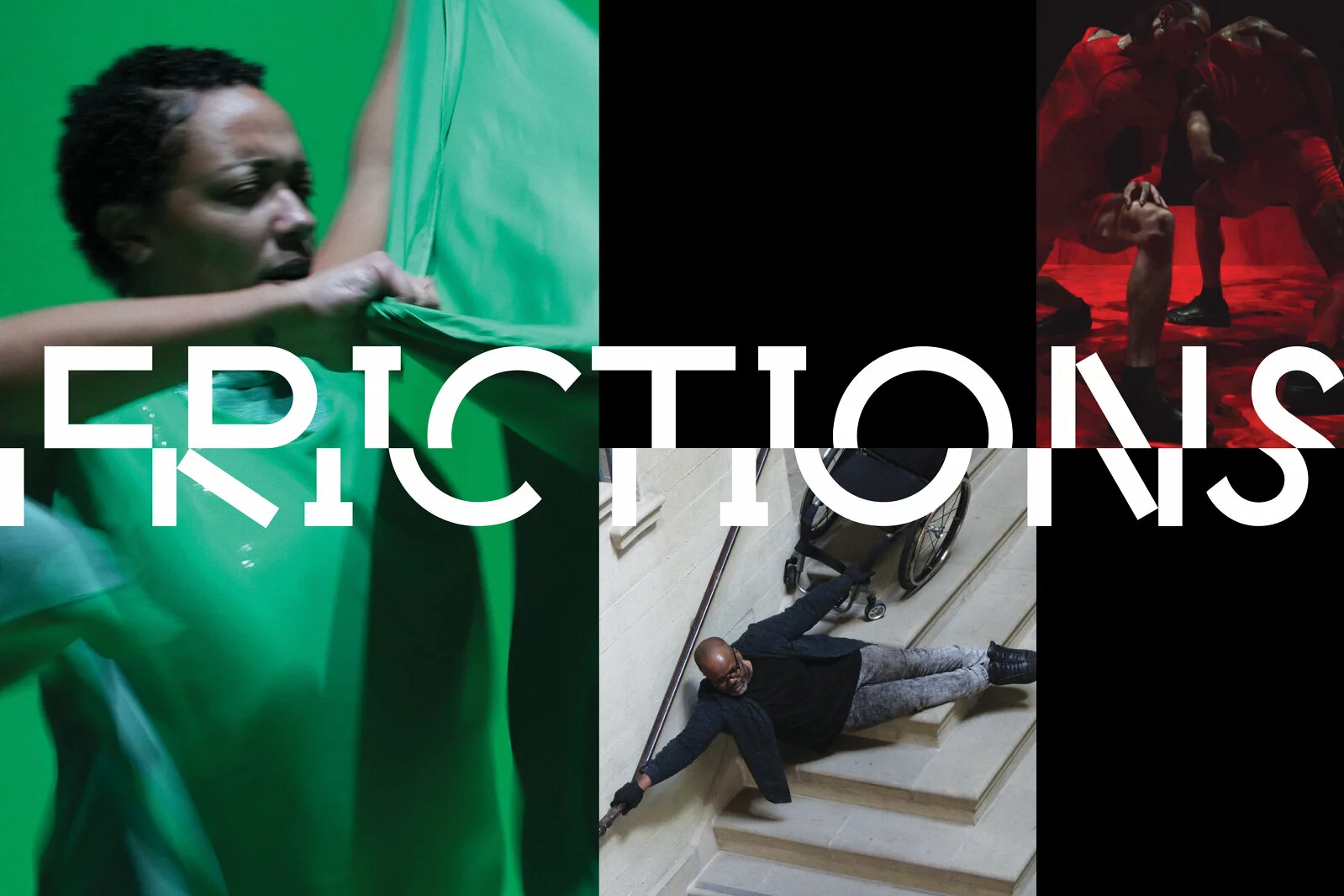
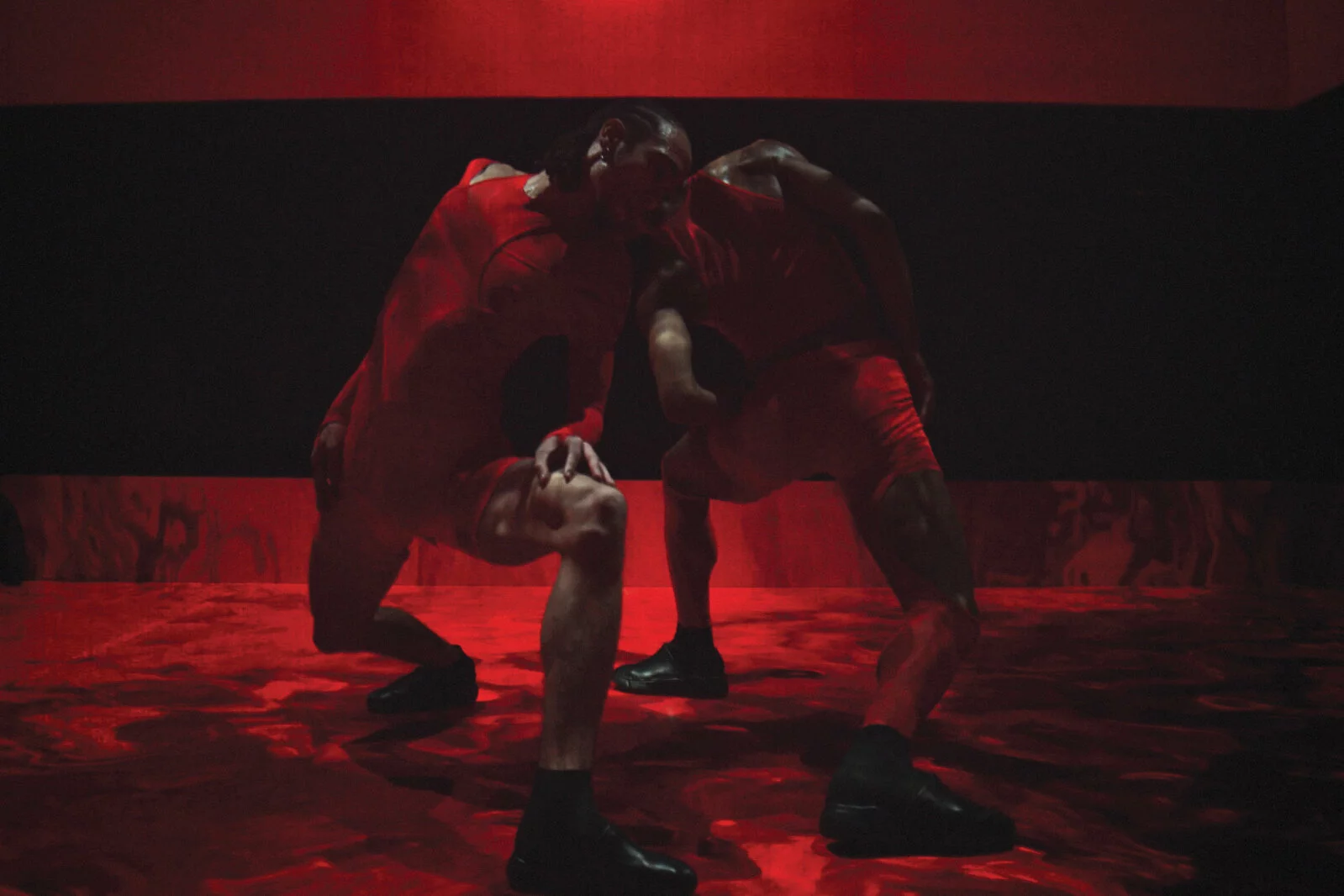
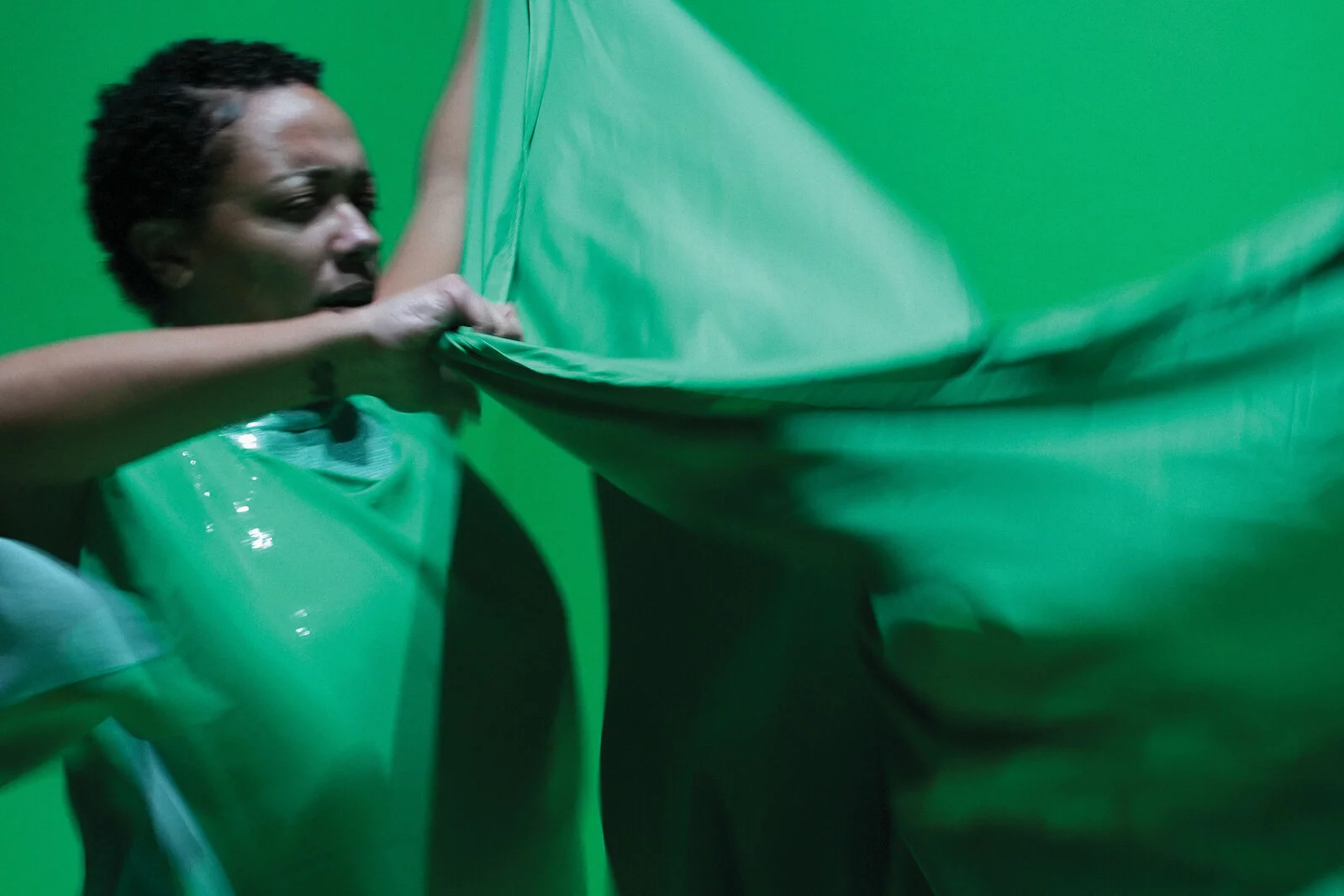
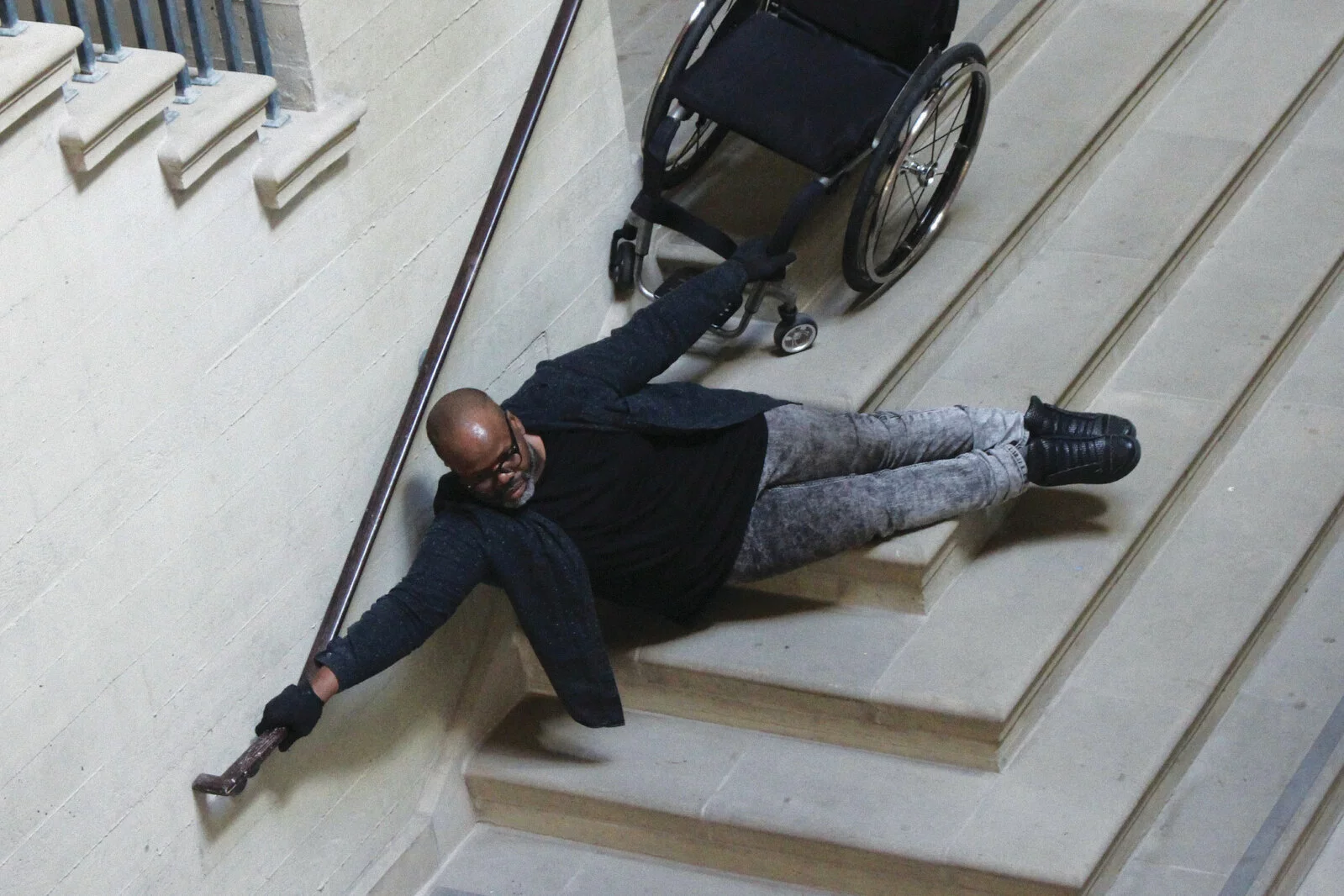
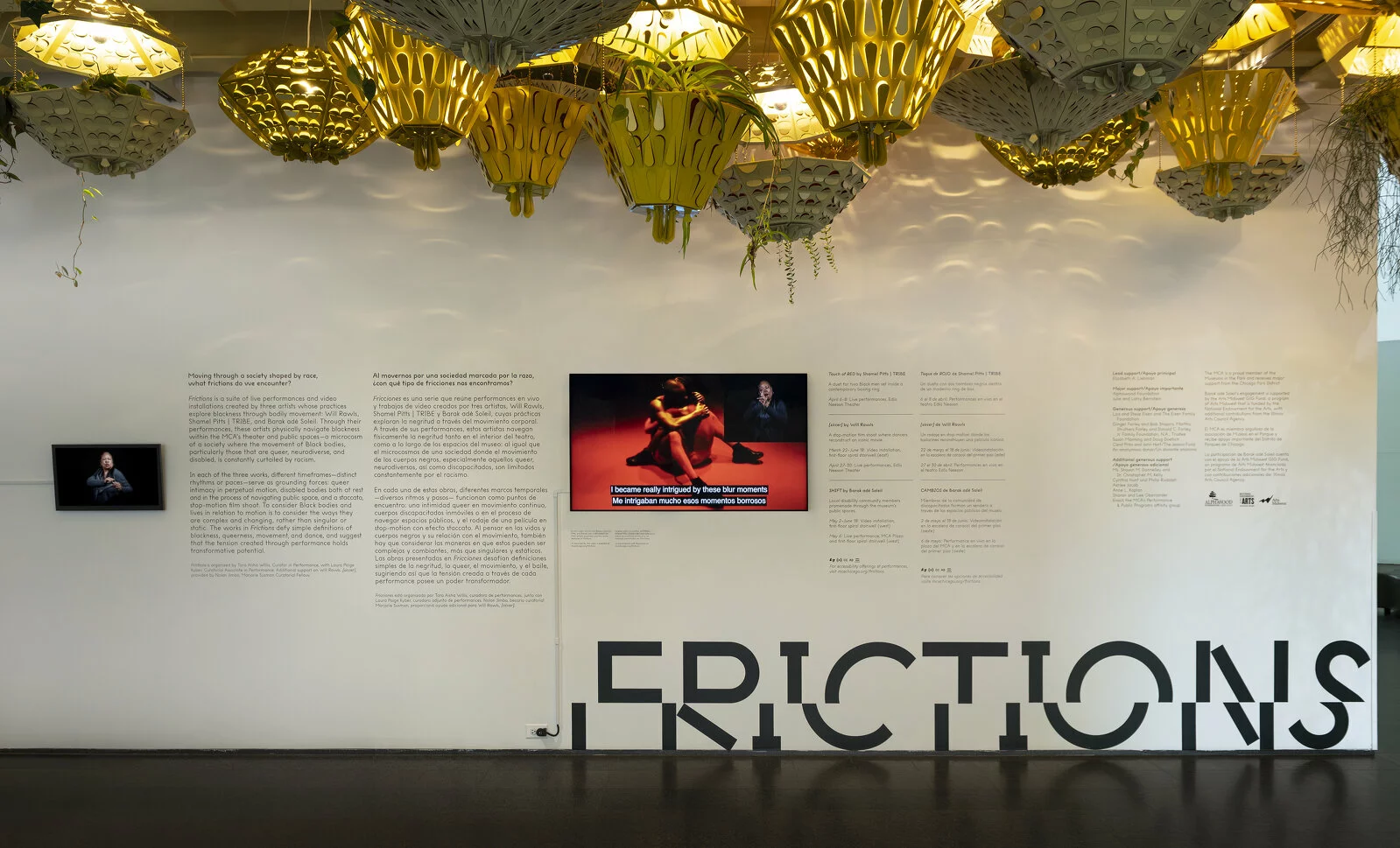
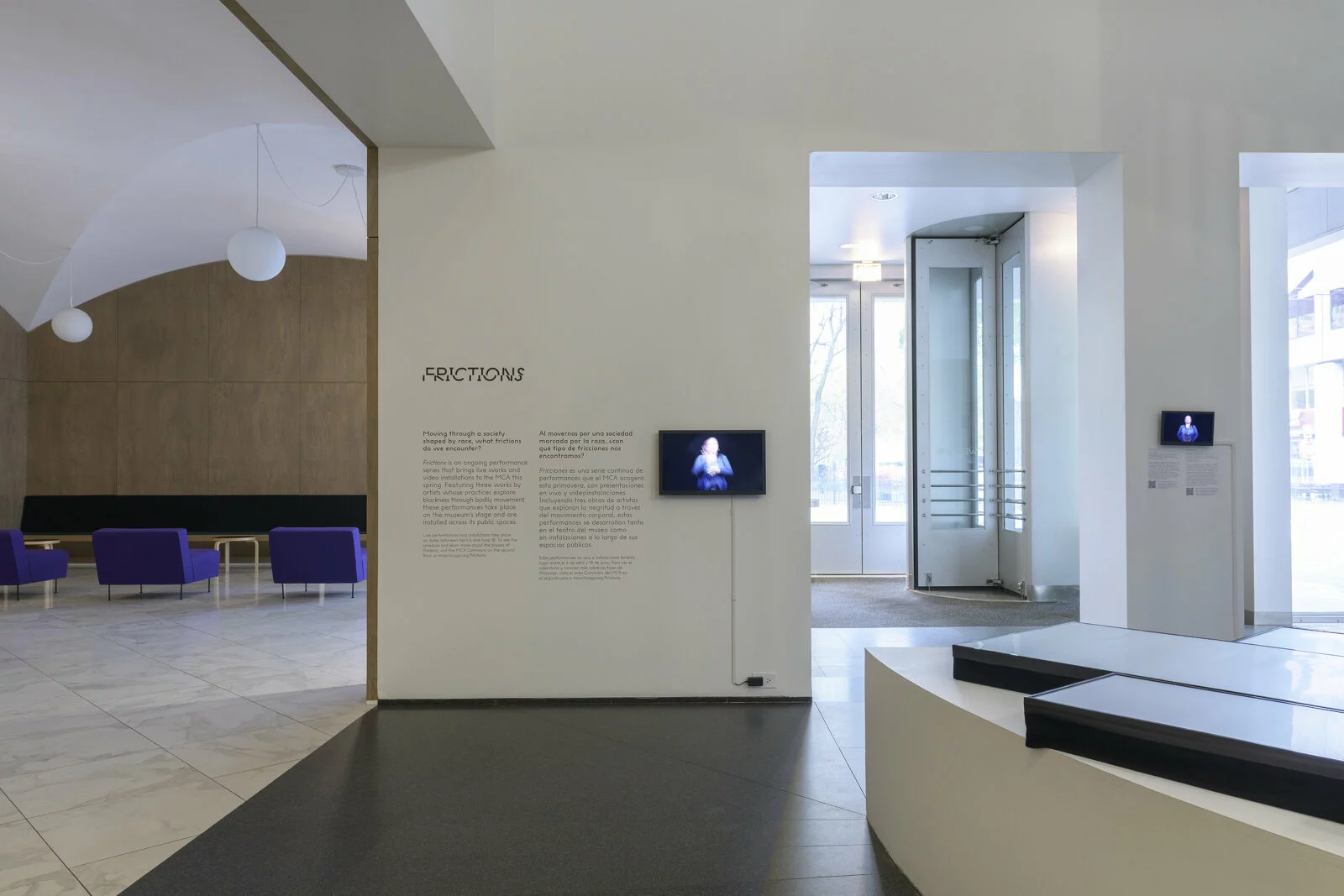
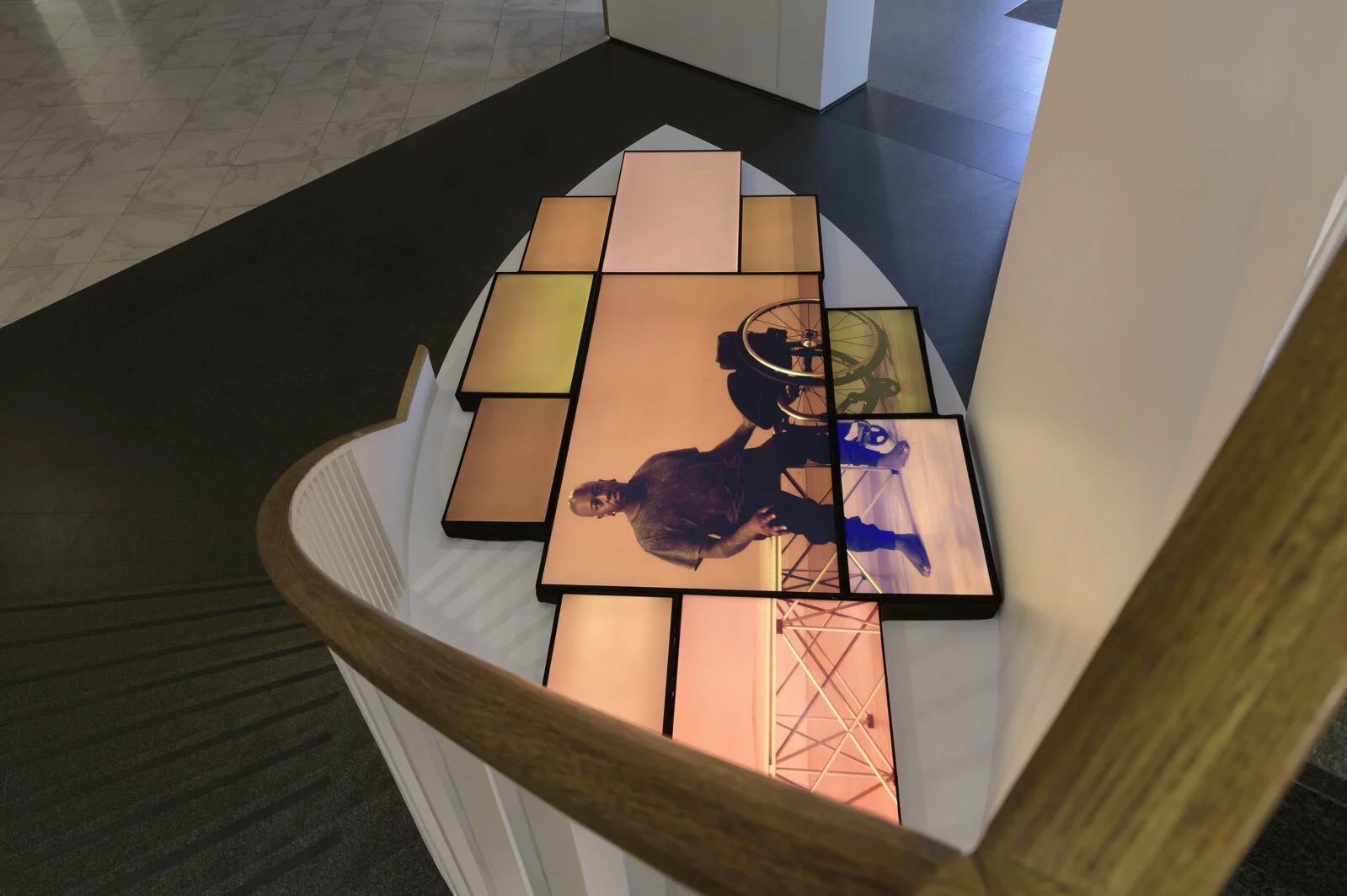
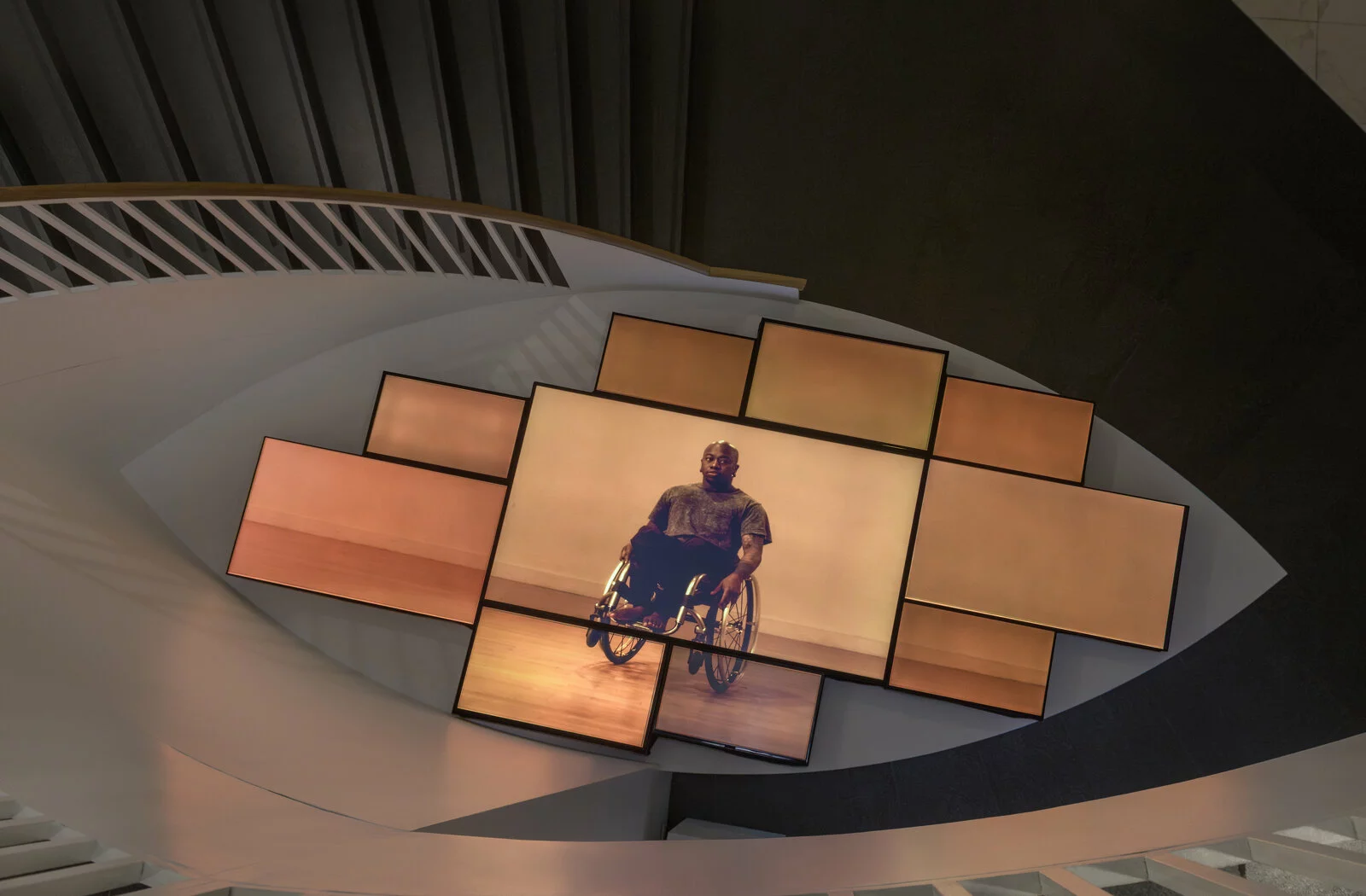
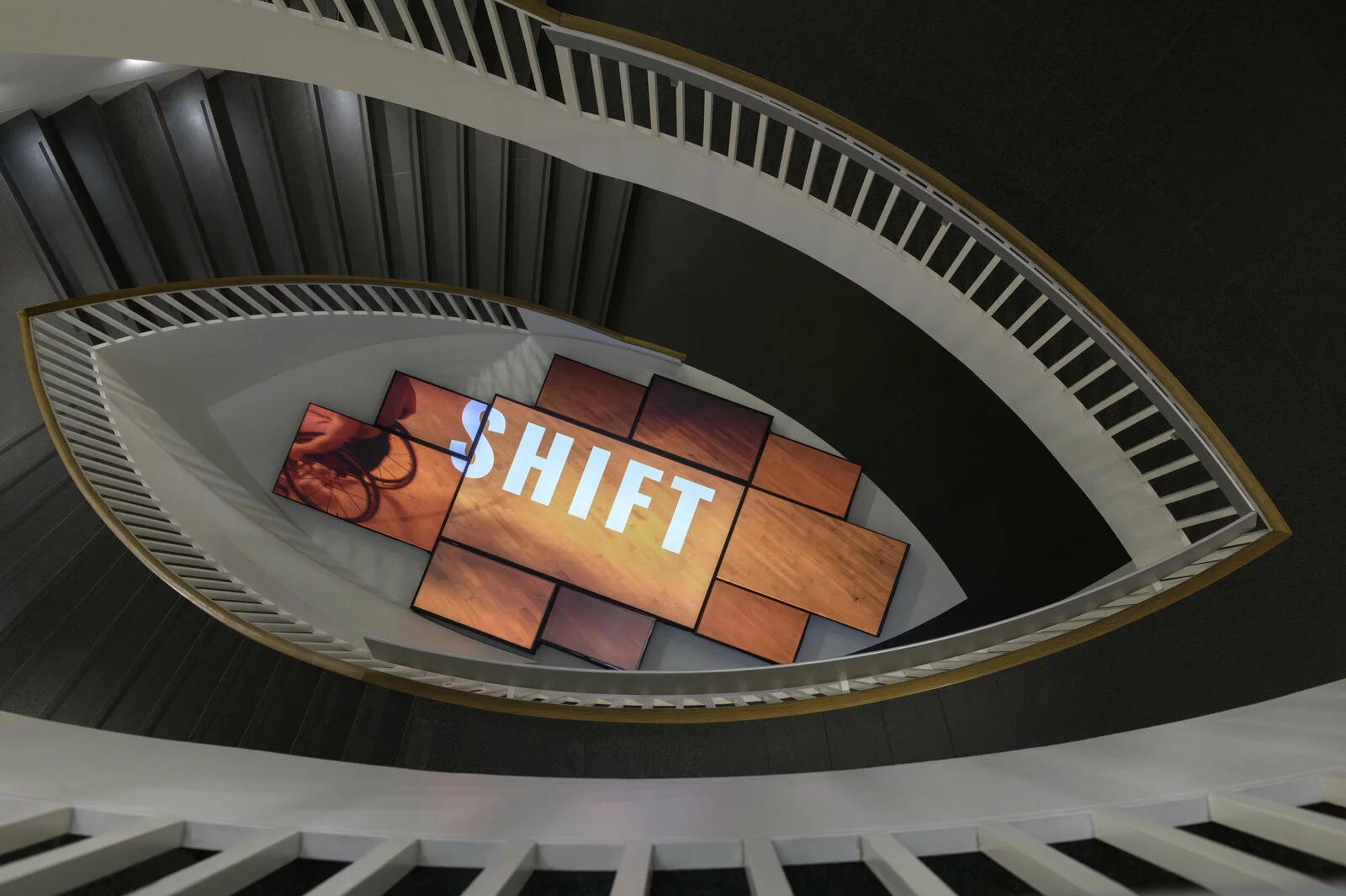
![Will Rawls (b. 1978, Boston; lives in Brooklyn and Los Angeles), <em>[siccer]</em>, 2023. Single-channel video, nylon, spandex, wood, speakers; 1 hour, 3 minutes. Installation view, <em>Frictions</em>, MCA Chicago. Photo: Shelby Ragsdale, © MCA Chicago. 2023/02/frictions_willrawls_siccer_53.jpg](https://visit.mcachicago.org/wp-content/uploads/2023/02/frictions_willrawls_siccer_53.webp)
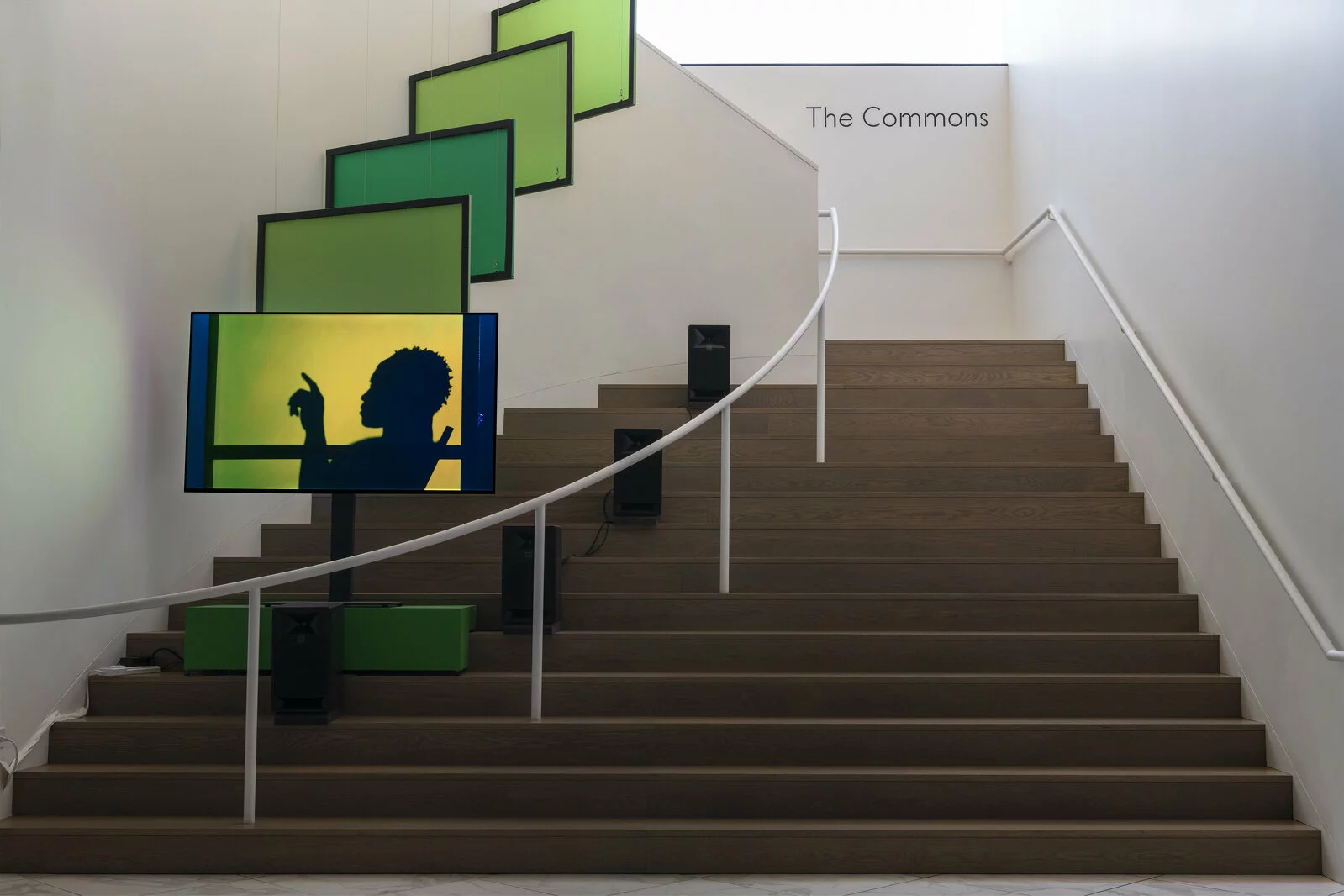
![Will Rawls (b. 1978, Boston; lives in Brooklyn and Los Angeles), <em>[siccer]</em>, 2023. Single-channel video, nylon, spandex, wood, speakers; 1 hour, 3 minutes. Installation view, <em>Frictions</em>, MCA Chicago. Photo: Shelby Ragsdale, © MCA Chicago. 2023/02/frictions_willrawls_siccer_49.jpg](https://visit.mcachicago.org/wp-content/uploads/2023/02/frictions_willrawls_siccer_49.webp)
![Will Rawls (b. 1978, Boston; lives in Brooklyn and Los Angeles), <em>[siccer]</em>, 2023. Single-channel video, nylon, spandex, wood, speakers; 1 hour, 3 minutes. Installation view, <em>Frictions</em>, MCA Chicago. Photo: Shelby Ragsdale, © MCA Chicago. 2023/02/frictions_willrawls_siccer_65.jpg](https://visit.mcachicago.org/wp-content/uploads/2023/02/frictions_willrawls_siccer_65.webp)